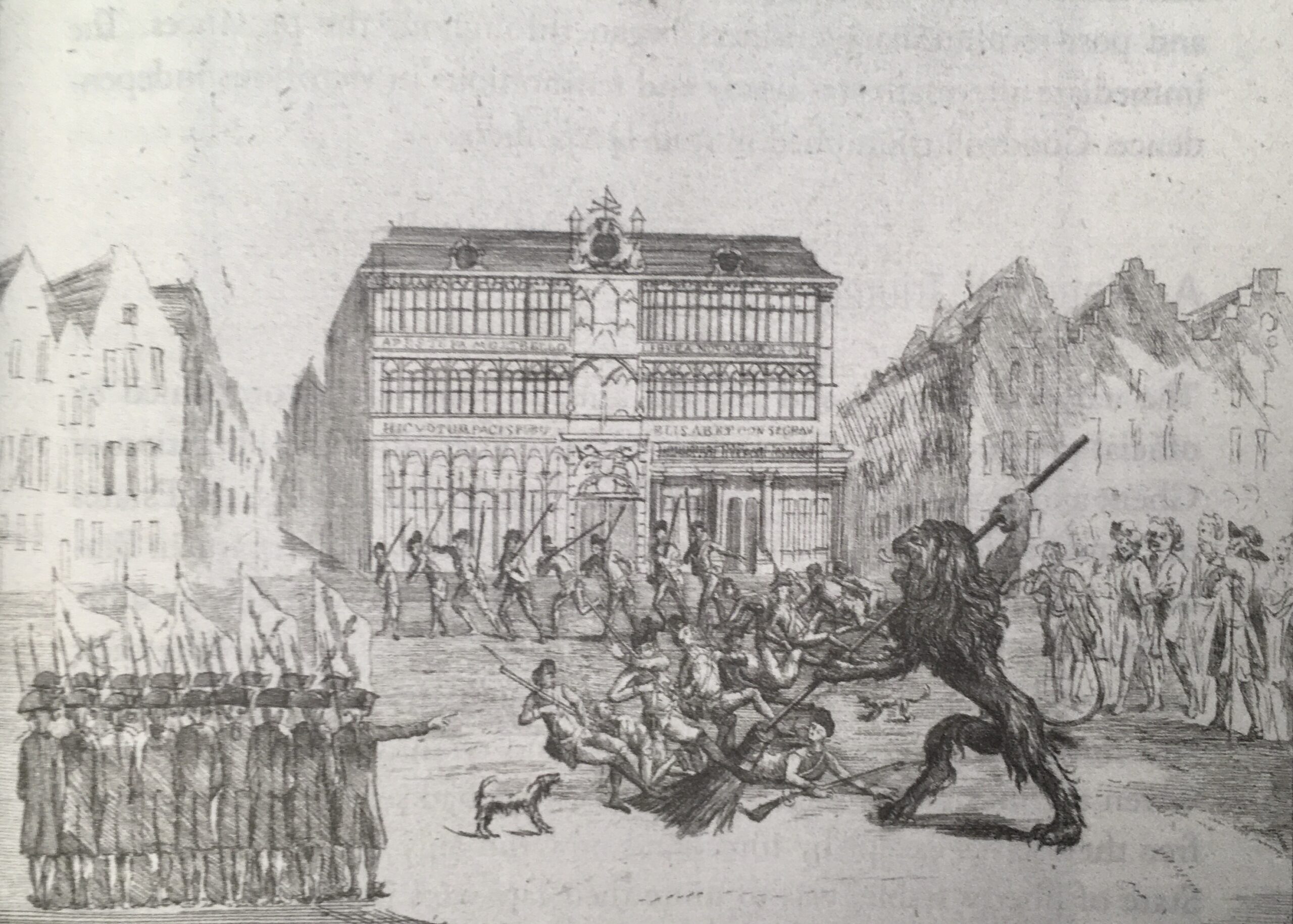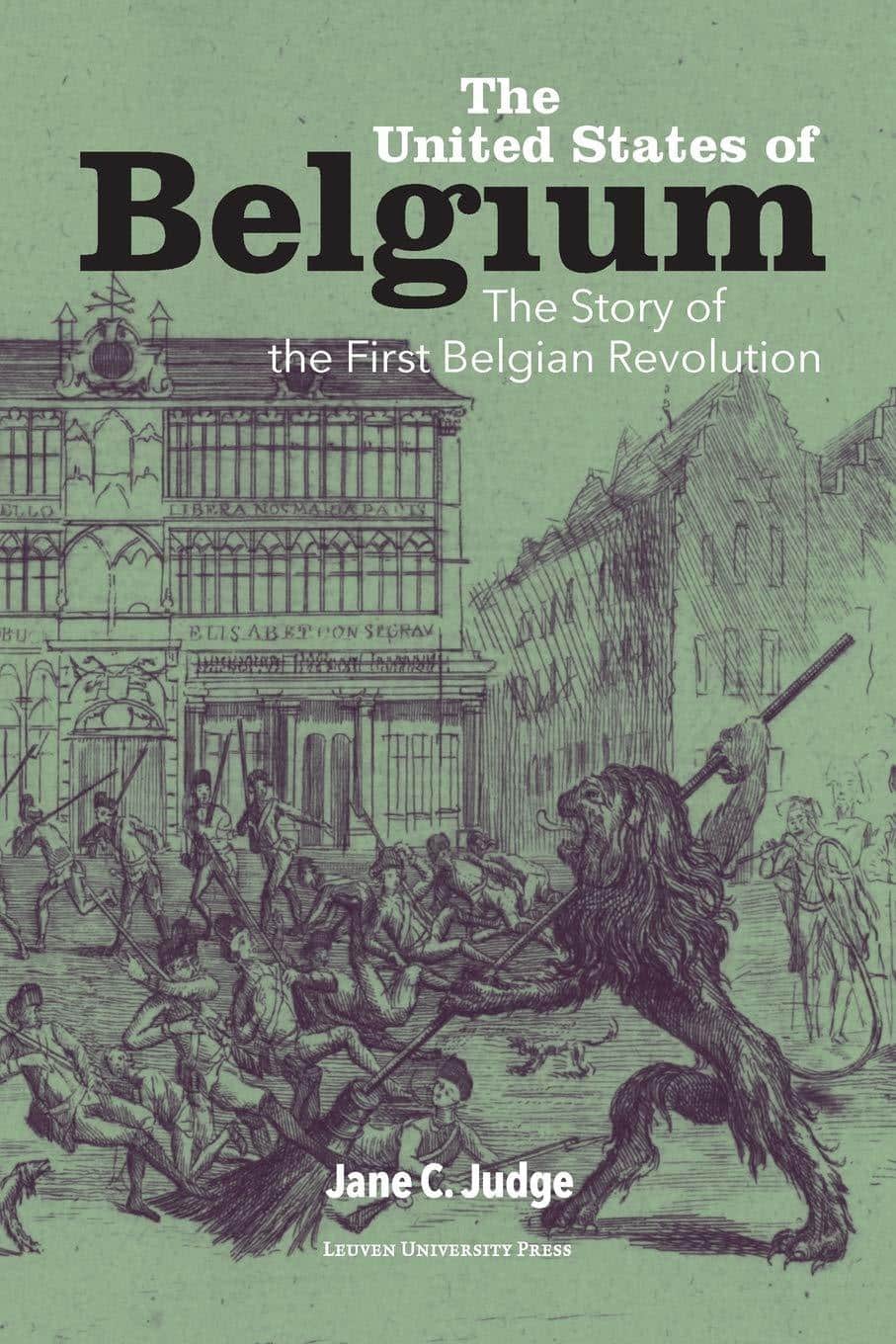The United States of Belgium. The Story of the Revolution That Shaped Belgianness
In 1789, the same year as the French Revolution, a Belgian revolution was already underway, long before Belgium existed. What began as a protest against the Austrian Emperor Joseph II’s reforms resulted in a declaration of independence by the United States of Belgium. In her book of the same name, Jane Judge gives new insights into the seminal events that shaped Belgianness, a national Belgian identity.
In The United States of Belgium. The Story of the First Belgian Revolution, Jane Judge presents a detailed description of the events of the Belgium Revolution of the years 1789 and 1790. The subtitle of the book – which is the result of her PhD research conducted at the University of Edinburgh – already reveals Judge’s most important argument: the upheaval that swept through the Belgium provinces between 1789 and 1790 should be interpreted as a national revolution during which a modern ‘Belgium national consciousness solidified’ for the first time.
Judge sees the Revolution as the most important moment for the formation of a modern ‘national Belgium identity’. This implied a political identity articulated through national political expression in pamphlets and brochures, thus constituting a new national political discourse at the end of the eighteenth century. The revolutionary events can, therefore, be qualified as an uprising with national aspirations, in this regard equal to the other (second) Belgian Revolution of 1830, when the Southern provinces became detached from the United Kingdom of the Netherlands, a state which was created by the Allies at the Congress of Vienna after the defeat of Napoleon in 1815, and was ruled by the Protestant King William I of Orange-Nassau, scion of the former dynasty of Stadtholders from the Northern Netherlands.
 Clashes in the streets of Ghent, November 1789, illustration by Paul Jacob Laminit, 1790
Clashes in the streets of Ghent, November 1789, illustration by Paul Jacob Laminit, 1790© Wikipedia
The Belgian Revolution of 1789 has not always been regarded as a revolution with full national aspirations. Earlier scholars have labelled this development as the ‘Brabantine Revolution’ (in Dutch as Brabantse Omwenteling or in French as la Révolution brabançonne), hereby focusing on a small part of the current state of Belgium and underlining a prevalent local character of the events. According to Judge, this view does not do justice to the events because ‘the revolutionary moment is the moment in which “Belgianness”, rather than provincial distinctions’, became prevalent. It is ‘the moment Belgian national identity formed’.
The revolution is the moment in which “Belgianness”, rather than provincial distinctions, became prevalent
Throughout the book Judge labels this new Belgian identity in different ways. She calls it ‘new national patriotism’, ‘Belgianness’ and even ‘nationalism’. Following Robert Roswell Palmer’s famous Atlantic perspective on the ‘Age of Revolution’, Judge also draws a comparison with the American Revolution, the French Revolution and the Dutch Patriot movement which all evinced desire for political reform at the end of the eighteenth century. However, in Judge’s book the comparison between the other Atlantic revolutions is not made on a systematic level and mostly serves to contextualise the narrative on the Belgium revolutionary spirit.
This well-written book is divided into eight chapters. The first six chapters contain a chronological description of the most important events, from the reforms of Joseph II that sparked the start of the revolution, up until the end of December 1790 when Leopold II ended the last aspirations of the national movement. All chapters also address the question to what extent national consciousness would triumph over provincial identities. The answer to this question remains ambivalent. While the revolution was characterised by shared national feelings, the different provinces independently published their own versions of the ‘declaration of independence’. At the same time, the reference to ‘la Belgique’ was prominent in most writings.
The political project – known as the ‘United States of Belgium’ – was primarily born out of political pragmatism
Thus, while the ‘idea’ of Belgium was created during the revolution, Judge asserts that the political project that followed – known as the ‘United States of Belgium’ – was not primarily born out of a programmatic nationalism or national patriotism, but out of political pragmatism. This argument is based on a selection and analysis of an impressive number of political pamphlets. Around 2,500 political brochures were published during the revolutionary years, of which the most influential are discussed and cited by Judge. She shows how these sources do allow us to follow the debate and determine how the political discourse of the Southern Netherlands changed into a national one. A wide range of images from the revolutionary years supplements the story. These images are a great addition to the book, but regrettably, Judge does not fully integrate an analysis of these often highly politicized drawings of the events into her narrative.
 The Belgian lion sweeps Imperial troops from the Brussels Grand-Place as revolutionary volunteers look on.
The Belgian lion sweeps Imperial troops from the Brussels Grand-Place as revolutionary volunteers look on.In the last part of the book called ‘Revolutionary Dissent: Debating a Belgian Nation’, Judge discusses the meaning of the concept of Belgianness based on a survey of 75 pamphlets, of which she has studied fifteen in detail. The chapter addresses the long-standing historiographical discussion on the antagonism between the two revolutionary camps, namely the Vonckists/democrats and Statisten/Vandernootists. Judge shows that the royalist camp would have supported the reformist ideas based on their adherence to the idea of a Belgium identity and nation. The most important concepts that show the emerging of a national consciousness and the new discourse are, according to Judge, the ‘people’, the ‘nation’, the ‘Belges’ and ‘Nederlanders’ that are found in many of the pamphlets. While the definition of Belgianness was still heavily debated and flexible, Judge convincingly argues that there is enough evidence that shows for a collective, pan-provincial communal feeling that surpasses more primitive forms of patriotism.
In the epilogue, the birth of the idea of Belgianness is discussed once more. Understanding the revolution is not easy. That is also true for the idea of a Belgian identity between 1789 and 1790, which is not defined with great exactitude by Judge. I agree with her suggestion that multiple identities co-exist and that these identities are diffuse, multi-layered and can crystallize through economic, political and cultural developments (and especially during periods of turmoil, war and revolution). However, as this book connects the idea of Belgianness to the heavily debated concepts of nationalism and patriotism, it is a pity that a more clear description of which specific political, religious, and socioeconomic elements actually constituted this Belgianness between 1789 and 1790 is missing. Judge rightly states that national identity is ‘flexible’, but her book would have benefitted from a more specific definition of this ‘national Belgium identity’ at this particular moment in time.

Having said this, the book provides a profound analysis of the rich sources surrounding the pivotal events in Belgium at a time when Europe was swept by a revolutionary spirit. Last but not least, the clear presentation of the source material, in combination with the images and the excellent writing style, makes it an insightful read for anybody interested in these events in the history of Belgium.
Jane C. Judge, The United States of Belgium, The Story of the First Belgian Revolution, Leuven University Press, Leuven, 310 pp.
This review was previously published in Low Countries Historical Review.












